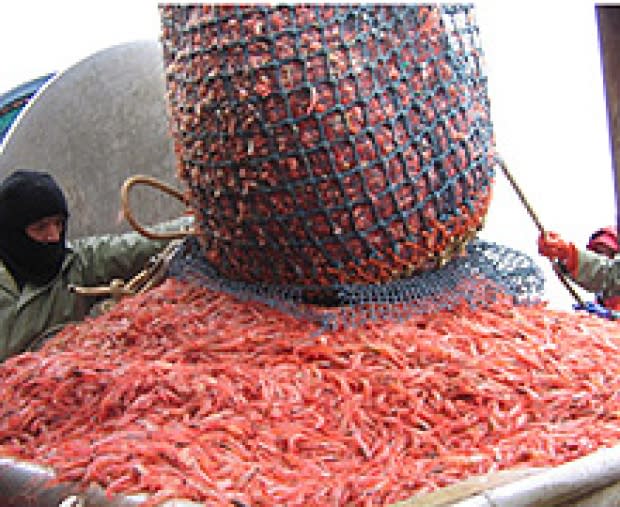Northern shrimp stock plunges off the coast of Labrador
The federal Department of Fisheries and Oceans' latest northern shrimp assessment shows a dramatic drop in the offshore Labrador stock, with a slight increase for the inshore fishery in Newfoundland.
New data from DFO Monday reveal a 46 per cent drop in the fishable biomass — defined as the weight of all the shrimp larger than 17 millimetres — between 2017 and 2018 in Shrimp Fishing Area 4, along Labrador's northernmost coast, to 42,100 tonnes.
Heading south down Labrador's coast to Shrimp Fishing Area 5, the biomass has dropped 43 per cent, to 80,100 tonnes.
But in Shrimp Fishing Area 6, off Newfoundland and Labrador's southernmost coast, fishable biomass is up three per cent, to 89,600 tonnes. But the stock in Area 6 is still considered by DFO to be at critical levels, while the drop in areas 4 and 5 have dropped the stock's rating from "healthy" to "cautious."

"When it enters the cautious zone, our goal is to reduce the exploitation rates so that we stop the decline of the stock, and then once it's below the limit reference point, then it would be in the critical zone. So at this point management tries to keep exploitation at no higher than 10 per cent," said DFO scientist Katherine Skanes at a briefing Monday.
Fish Food and Allied Workers-Unifor president Keith Sullivan said it's not positive news overall for the stock, but it's nice to see shrimp stabilizing in Area 6, which he said is where the majority of inshore harvesting is done.
Looking forward to quota meetings
"It's certainly a relief not to see further decreases there," said Sullivan. When it comes to next year's quota, Sullivan noted that Area 6's current quota is just 10 per cent of the fishable biomass, while in Area 5 it's 18.2 per cent, and 35.7 per cent was caught in 2018-19 in Area 4. Area 4 and 5 is mostly offshore fishing.
Given DFO's research suggests shrimp larvae mainly drift from north to south, and Sullivan said the quotas should reflect the connectivity between the fishing areas.
"Maybe there's more opportunities where we see an increase in Area 6 where the inshore harvesters are fishing, so we'll certainly look forward to those meetings that are coming up in the next few weeks."
Read more from CBC Newfoundland and Labrador

